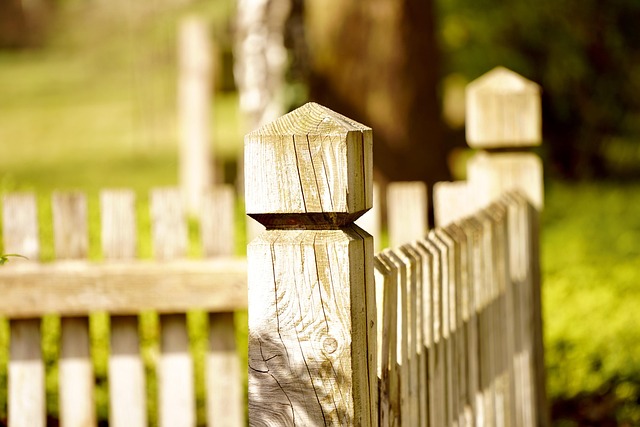Introduction:
Maintaining an attractive, durable wooden fence requires regular staining and sealing. This process not only enhances aesthetics but also safeguards your fence from the elements, prolonging its lifespan. Our comprehensive guide delves into the intricacies of fence staining and sealing, equipping you with the knowledge to transform your wooden fence. From understanding the benefits and exploring various stain types to preparing your fence and applying the right products, we cover every step to ensure a professional finish.
- Understanding Fence Staining: Benefits and Types
- Preparing Your Wooden Fence for Staining and Sealing
- Choosing the Right Stain and Sealer
- Step-by-Step Guide to Applying Stain and Sealer
Understanding Fence Staining: Benefits and Types
Fence staining is not just about aesthetics; it’s a protective layer for your wooden fences, offering multiple advantages. By sealing the wood, it prevents water absorption, which can lead to rot and decay, thus prolonging the fence’s life. Staining also shields against UV rays that cause fading and color loss.
There are various types of fence staining solutions available, each with unique benefits. Water-based stains are eco-friendly and easy to clean, while oil-based options provide deeper penetration and richer colors. Solid colors offer a classic look, whereas transparent stains enhance the natural grain of the wood.
Preparing Your Wooden Fence for Staining and Sealing
Before applying stain or sealer, your wooden fence needs proper preparation to ensure optimal results. Start by thoroughly cleaning the fence using a pressure washer or stiff brush to remove any dirt, debris, and mold buildup. This step is crucial as it ensures that the stain or sealer adheres well and provides even coverage.
Next, sand the fence surface gently to smooth out any rough spots or splinters. Use a fine-grit sandpaper to avoid damaging the wood further. Fill in any holes or cracks with a suitable filler, and let it dry completely. Once the fence is clean, dry, and smooth, it’s ready for staining and sealing, ensuring a long-lasting and aesthetically pleasing finish.
Choosing the Right Stain and Sealer
Choosing the right stain and sealer is an essential step in maintaining your wooden fence’s beauty and longevity. The market offers a wide array of options, each with unique characteristics designed to suit different fence types and aesthetic preferences. When selecting a stain, consider factors like wood tone enhancement, weather resistance, and durability. Dark stains create a rich, dramatic effect, while lighter shades can highlight the natural grain of your wood.
For sealing, protectants are crucial in shielding your fence from moisture, UV rays, and extreme temperatures. Water-based sealers are popular for their low odor and quick drying time, making them ideal for residential use. Oil-based sealers, though more durable, may take longer to dry and emit stronger odors. Always read product labels and follow manufacturer instructions for the best results.
Step-by-Step Guide to Applying Stain and Sealer
Applying stain and sealer to your wooden fence is a relatively straightforward process, but following a systematic approach will ensure the best results. First, clean the fence thoroughly to remove any dirt, dust, or debris using a pressure washer or a bristled brush and soapy water. Allow the fence to dry completely before proceeding. Next, select the appropriate stain or sealant for your wood type and desired finish.
Stir the chosen product vigorously according to the manufacturer’s instructions before beginning. Start at one end of the fence and apply the stain or sealer using a paintbrush or roller, working in small, even sections. Allow the first coat to dry, then assess if an additional coat is needed based on the product’s coverage and your desired opacity. Even coats are crucial for achieving an even, long-lasting finish.
